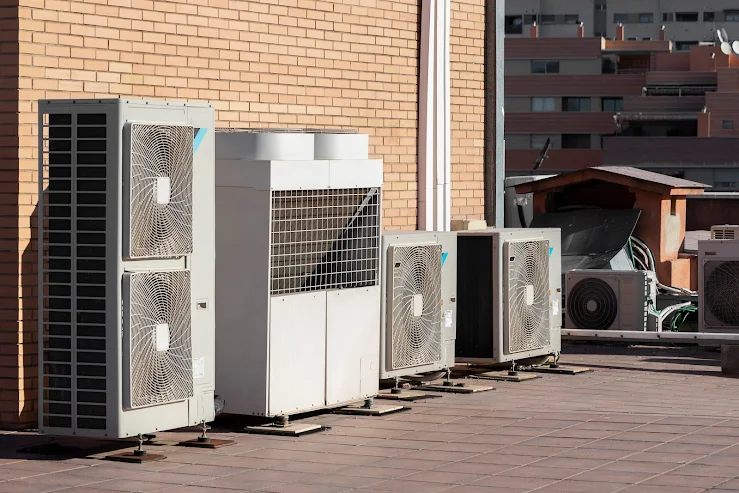Why Does the HVAC System have High Static Pressure?
1. Unclean or obstructed filters
Obstructed or unclean air filters are among the most frequent sources of excessive static pressure. Increased static pressure results from restricted airflow caused by clogged filters, which makes the system work harder to force air through.
2. Wrong Duct Configuration
Poorly built ducting can greatly impact static pressure. Static pressure rises when airflow resistance increases due to tiny ducts that cannot accommodate the volume of air the system needs to move or excessively sharp bends and turns.
3. Blockage of Ducts
High static pressure can also result from obstructions in the ductwork, such as garbage, closed dampers, or collapsed ducts. When an obstruction in the duct system occurs, the HVAC unit must work harder to circulate air, raising the static pressure.
4. High Requirement for Airflow
Static pressure will be higher in systems configured to run with more airflow than the duct system can manage. Incorrect system settings or an improperly sized HVAC unit relative to the ductwork may cause this mismatch.
5. Vents that are closed or mostly closed
Back pressure in the system is produced by closed or partially closed supply vents. The ducts' static pressure rises due to the smaller air outlet's increased resistance.
6. Unclean or Obstructed Coils
Airflow may be restricted if the condenser or evaporator coils are clogged or unclean. When there is less airflow through the coils, static pressure rises, putting more strain on the blower.
7. Insufficient Air Supply Return
An imbalance in the system may result from an inadequate return air supply. If the return ducts are too tiny or there are not enough return vents, the system has to work harder to draw air back in, raising the static pressure.
8. Filters with High Efficiency
High-efficiency filters have more resistance than ordinary filters, even though they can enhance the quality of air indoors. If the system is not built to handle these filters, then this additional resistance may lead to higher static pressure.
Ways to Handle Elevated Static Pressure
Finding and fixing the root causes is crucial to addressing high static pressure. Here are a few fixes:
- Frequent Maintenance: Make sure to clean and maintain filters, coils, and ducts regularly.
- Appropriate Duct Design: Ensure that ductwork is adequately sized and free of excessive bends and obstacles, and evaluate and redesign it as needed.
- Vent Management: To promote free circulation, keep supply vents open and clear of obstructions.
- System Balancing: Make sure there is enough return air flow in the HVAC system to maintain balance.
- Suitable Filters: To reduce needless resistance, choose filters that are compatible with the system's design criteria.
By comprehending and resolving these variables, you can sustain ideal static pressure inside your HVAC system, guaranteeing effective functioning and extending the equipment's lifespan.

